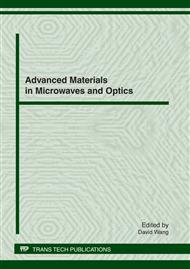p.592
p.598
p.603
p.609
p.616
p.623
p.629
p.635
p.640
Band Selection for Forest Stock Volume Estimation in Southern China
Abstract:
When forest stock volume is quantitative estimated using SPOT-5, QuickBird and ALOS optical data with linear regression model, the optimal ratio of remote sensing band is chosen from the above three types of optical remote sensing data respectively, which is a significant part. In this study, the experiments are taken in Zhazuo Forest of Xiuwen County of Guizhou Province. Comprehensive utilization of the three optical data, the selected ratio of band is confirmed according with characteristics of the forest region. Optimization of the ratio of band remote sensing method used is the criteria of mean residual sum of square called RMSq. In this paper the multicollinearity which commonly exsits between ratio of the original band is analyzed and studied to get rid of its unfavorable influence in this paper. By means of the criteria of mean residual sum of square, the ratio of remote sensing band which determines the impact of forest stock volume estimation is confirmed finally. Conclusions are as follows: Compared with the selected band, multiple-correlation has been greatly reduced. The optimal ratio of remote sensing band such as SP4, SP2-3/2+3, SP 1-4/1+4, SP1*3/2 has an important role on the interpretation of forest stock volume estimation.
Info:
Periodical:
Pages:
616-622
Citation:
Online since:
January 2012
Authors:
Price:
Сopyright:
© 2012 Trans Tech Publications Ltd. All Rights Reserved
Share:
Citation:


